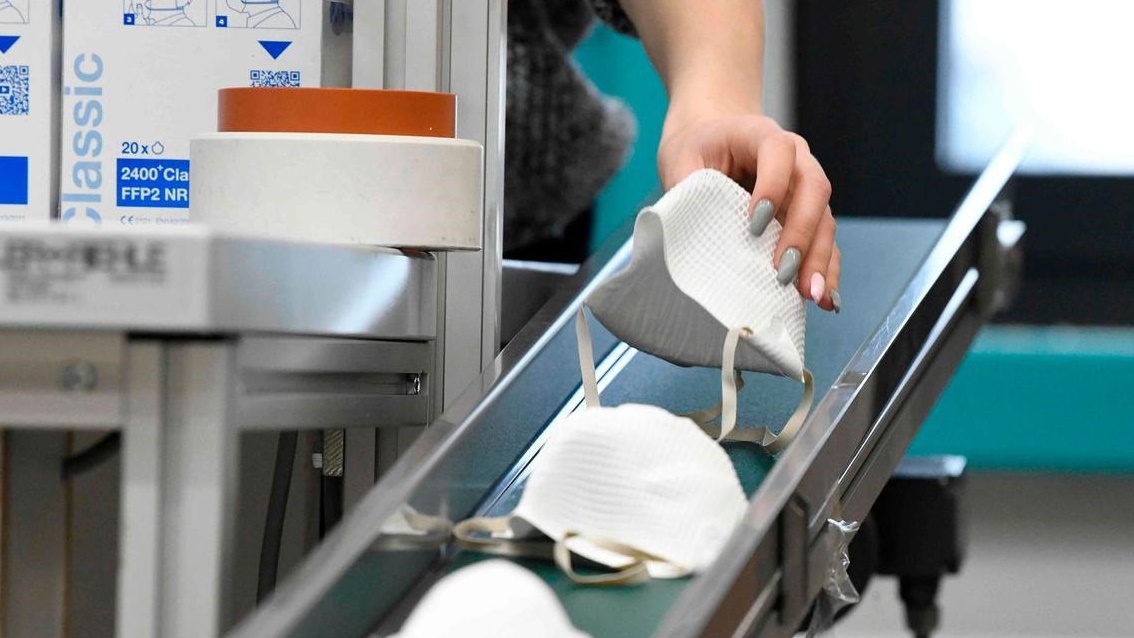You can now follow the latest news for free through our Facebook page
Click here to subscribe
—
Washington : In view of the spread of mutated versions of the Corona virus that are more contagious than the basic version, it has become necessary to wear masks of enhanced quality and standards, or a surgical and fabric mask at the same time, according to several experts.
Scientists currently agree that the virus is transmitted mainly through the air and not through contaminated surfaces. And there is growing evidence that tiny droplets that can spread several meters during a person’s talking or breathing may be sufficient to transmit disease.
The situation is complicated by the fact that some mutated copies, such as those that appeared in Britain, are transmitted more easily than the main virus spreading in the world, according to a number of experts.
When the epidemic began to spread and the authorities recommended the wearing of surgical masks, there were not sufficient quantities of them, so the wearing of “home-made” masks was encouraged, usually of old pieces of clothing.
The effectiveness of a mask depends on two things
But these solutions are far from perfect. So what is the best option?
“The effectiveness of a mask depends on two things: its filtering ability and its ability to control and tighten it,” says Lynsey Marr, a professor at Virginia Tech University who specializes in airborne diseases, told AFP.
She points out that “good filtration prevents the passage of the largest possible number of particles, and that tightly adjusting the muzzle means there is no leakage around its edges where air can pass, and thus the virus,” explaining that even a small opening may reduce the effectiveness of the mask by 50 percent .
The best materials that prevent the entry of fine particles are the non-woven polypropylene used in many surgical masks or masks equipped with a filter such as “KN95”.
As for the best type of fabrics, it is well-packed cotton.
The specialist says, “You should feel that your mask is pulling inward during inhalation, and if you put your hands on its sides, you should not feel any air coming out during the exhalation.”
The masks equipped with a metal rod allow it to be better controlled at the level of the nose and is more effective in this regard when the rubber bands are wrapped around the head and not around the ears only.
Cotton mask
“If you wear a cloth muzzle, choose one that has multiple layers, with a small pocket to allow a filter to be inserted into it. Or you can put a surgical mask under that cloth,” Lynsey Marr explains.
Surgical masks are made of a material that has great filtering ability, but tends to be loose fitting. Thus, adding a cloth mask may help keep the edges sticking to the face, reducing the possibility of particulate leakage.
Also, adding a layer improves the filtration process. If one layer can retain 50 percent of the particles, then with two layers, that percentage increases to 75 percent.
But she added, “We do not recommend wearing more than two masks, as this may affect the ability to breathe well.”
There is another option: a “KN95” or “FFP2” mask, depending on the country, which is usually reserved for medical workers. These masks are the most capable of filtering air.
“They all provide a similar level of filtration of particles in and out,” explains Rano Dillon, a physician at Brigham and Women’s Hospital and Harvard Medical School.
He has campaigned to encourage the use of more effective masks since spring, and he regrets not providing public information on their benefits.
We may continue to use the muzzle
“There was no concerted effort to produce and distribute them collectively,” he continues. Even after the Coronavirus crisis ends, masks may continue to be partially worn.
Before the pandemic, University of Maryland professor Donald Milton, along with other scientists, studied influenza and concluded that it can also be transmitted by particles released by speaking or breathing. They explained that the role of sneezing and coughing and the transmission of the virus across surfaces is less than what was initially estimated.
At the time, their research sparked controversy but was revived after the spread of COVID-19. Therefore, masks may continue to be encouraged in the future during influenza season.
– .


